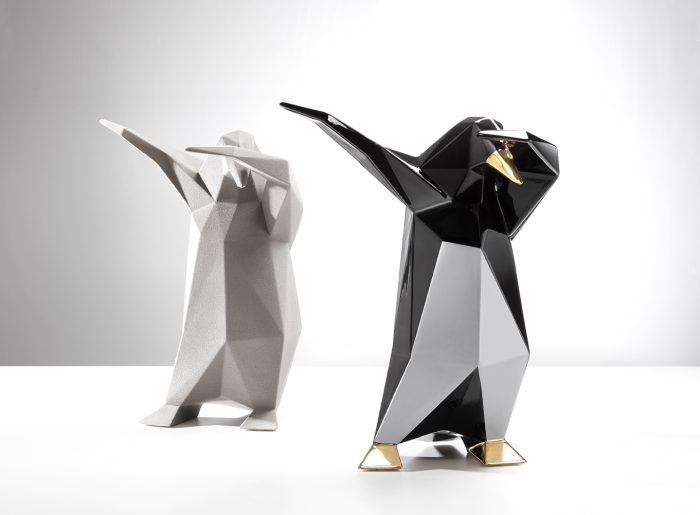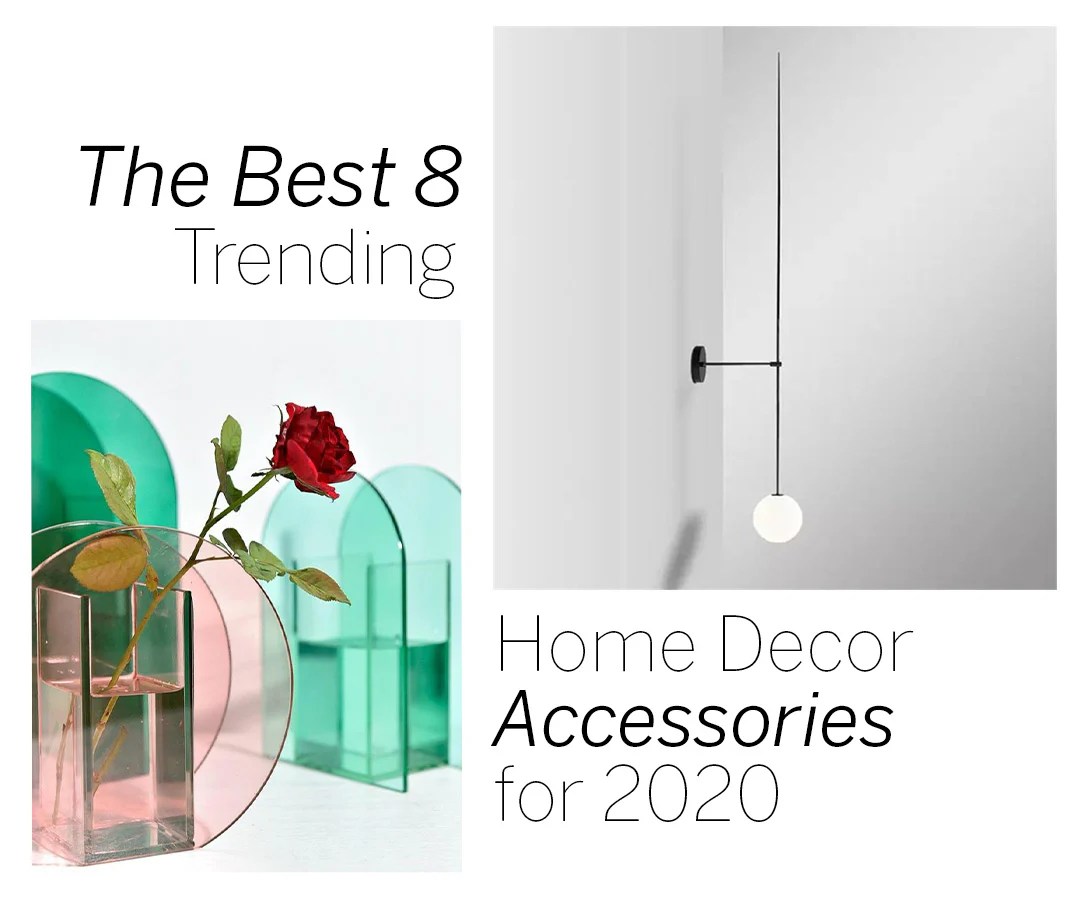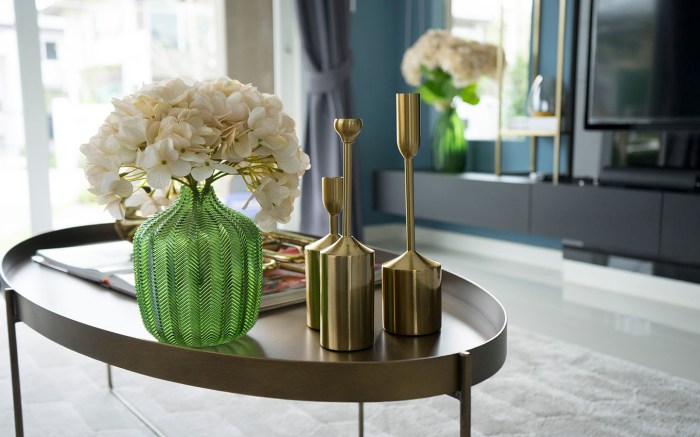Defining “Trendy” in Home Decor Accessories
Trendy accessories for home decor – Defining what constitutes a “trendy” home decor accessory requires considering several interconnected factors. Trendiness isn’t merely about fleeting popularity; it reflects a confluence of design aesthetics, material innovations, and cultural shifts. This section will delve into the characteristics of current trends, the forces shaping them, and how they differ from recent past trends.
Characteristics of Trendy Home Decor Accessories
Currently trendy home decor accessories are characterized by their innovative use of materials, bold design statements, and a reflection of current societal values. Sustainability, for instance, is a significant driver, leading to a surge in popularity of recycled and ethically sourced materials. Furthermore, accessories often incorporate unique textures and forms, moving beyond the purely functional to become artistic focal points within a space. Finally, trendiness is also reflected in the versatility of an accessory – its ability to seamlessly integrate into a variety of design styles.
Key Factors Influencing Current Trends
Three major factors shape current trends: social media influence, the pursuit of sustainability, and evolving design philosophies. Social media platforms act as powerful trendsetters, showcasing new products and styles to a vast audience. The growing awareness of environmental issues has spurred a demand for eco-friendly materials and sustainable production methods. Lastly, the ongoing evolution of design styles – from minimalist to maximalist and everything in between – constantly redefines what is considered aesthetically pleasing.
Comparison of Current and Past Trends
Comparing current trends with those of the past five years reveals a significant shift towards sustainability and a greater emphasis on personalization. While minimalist aesthetics were dominant five years ago, current trends encompass a broader spectrum, including maximalist, bohemian, and eclectic styles. The use of natural materials has also increased dramatically, replacing some of the previously popular synthetic options. The focus has moved from purely aesthetic appeal to a holistic consideration of ethical and environmental impact.
Examples of Trendy and Outdated Accessories

| Accessory Type | Trendy Example | Outdated Example | Trend Duration |
|---|---|---|---|
| Lighting | Woven pendant lights with natural fibers | Crystal chandeliers (overly ornate) | 2-3 years |
| Textiles | Handwoven throws with sustainable materials (e.g., organic cotton) | Shiny, synthetic throws in bright, primary colors | 1-2 years |
| Wall Decor | Macrame wall hangings, large-scale botanical prints | Small framed prints of generic landscapes | 3-5 years |
| Vases | Ceramic vases with textured surfaces and earthy tones | Sleek, minimalist glass vases in clear or neutral colors | 2-3 years |
Popular Material and Design Trends
The materials and design styles employed in trendy home decor accessories are intrinsically linked to the broader trends discussed earlier. This section will explore the most popular materials, design styles, and color palettes shaping current trends.
Popular Materials
Sustainable materials are taking center stage, with bamboo, rattan, recycled glass, and organic cotton gaining immense popularity. Metals, particularly brass and black matte finishes, continue to be relevant, adding a touch of luxury and sophistication. Natural stone, such as marble and terrazzo, is also a popular choice, bringing a sense of elegance and durability to accessories.
Dominant Design Styles
Current trends showcase a blend of styles. Minimalism remains influential, emphasizing clean lines and functionality. However, maximalism is also experiencing a resurgence, celebrating eclecticism and layering textures and patterns. Bohemian styles, characterized by their relaxed and free-spirited aesthetic, continue to be popular, offering a sense of warmth and individuality. Japandi, a fusion of Japanese and Scandinavian design, is also gaining traction, focusing on simplicity, functionality, and natural materials.
Impact of Color Palettes
Color palettes play a crucial role in defining the mood and aesthetic of a space. Earthy tones, such as terracotta, olive green, and beige, are highly popular, creating a calming and inviting atmosphere. Muted jewel tones, like emerald green and sapphire blue, add a touch of sophistication and luxury. The use of contrasting colors, such as deep navy and blush pink, creates visual interest and dynamism. For example, a living room might incorporate a deep teal sofa with blush pink throw pillows and terracotta-colored accessories.
Trendy Accessory Mood Boards
Three distinct mood boards illustrate the diversity of current trends:
Mood Board 1: Minimalist Modern – This mood board features clean lines, neutral colors (off-white, gray, black), natural materials like wood and linen, and simple geometric shapes. Accessories would include a sleek ceramic vase, a minimalist clock, and a woven cotton throw.
Mood Board 2: Bohemian Eclectic – This board is rich in texture and color, incorporating warm earthy tones (terracotta, mustard yellow, deep browns), natural fibers (rattan, jute), and eclectic patterns. Accessories might include a macrame wall hanging, a patterned rug, and colorful ceramic pots.
Mood Board 3: Japandi Serenity – This mood board emphasizes simplicity and functionality, using a muted palette of natural colors (beige, cream, gray) and natural materials (wood, bamboo, linen). Accessories would include simple ceramic bowls, a minimalist wooden tray, and a neutral-toned cotton throw.
Trendy Accessories by Room
The selection of home decor accessories should be tailored to the specific function and style of each room. This section will explore trendy accessories for living rooms, bedrooms, kitchens, and bathrooms.
Living Room Accessories
Living rooms are the heart of the home, requiring accessories that enhance both style and functionality. Trendy options reflect the dominant design styles, incorporating both aesthetic appeal and practical considerations.
- Woven throw blankets
- Ceramic vases with dried flowers
- Rattan coffee table
- Statement artwork
- Textured throw pillows
Bedroom Accessories
Bedroom accessories should create a relaxing and inviting atmosphere. Prioritizing comfort and personal style is key.
- Organic cotton bedding
- Wooden bedside tables
- Ambient lighting (table lamps, string lights)
- Soft textured rugs
- Personalized artwork or photographs
Kitchen Accessories
Kitchen accessories should be both functional and aesthetically pleasing. Materials should be easy to clean and maintain.
- Wooden cutting boards
- Ceramic bowls and canisters
- Statement pendant lighting
- Herb planters
- Stylish dish towels
Bathroom Accessories

Bathroom accessories should enhance the spa-like feel of the room, focusing on cleanliness and functionality.
- Natural fiber bath mats
- Ceramic soap dishes and toothbrush holders
- Rattan baskets for storage
- Candles and diffusers
- Plush towels
Impact of Social Media and Influencer Marketing
Social media platforms have fundamentally altered the way home decor trends emerge and spread. Influencer marketing plays a significant role in shaping consumer preferences and driving purchasing decisions.
Social Media’s Influence on Trends
Platforms like Instagram, Pinterest, and TikTok showcase a constant stream of visually appealing home decor ideas. Users are exposed to a wide range of styles and products, influencing their perception of what is trendy and desirable. The virality of certain aesthetics and products on these platforms can quickly translate into widespread adoption.
Key Home Decor Influencers
Several home decor influencers have built substantial followings and exert considerable influence on current trends. Their curated aesthetics, product recommendations, and before-and-after transformations inspire many to emulate their styles. While specific names are omitted to avoid endorsement, many such influencers exist across various platforms.
Social Media Trends and Purchasing Decisions
The visual nature of social media makes it easy for users to identify and replicate trends. Seeing a particular accessory in multiple posts or videos can lead to a desire to own it. Hashtags, product tags, and shoppable posts facilitate the direct translation of online trends into real-world purchasing decisions.
Hypothetical Social Media Campaign
A hypothetical social media campaign to launch a new trend could involve showcasing a unique, sustainable home accessory (e.g., a handcrafted ceramic planter made from recycled materials). Visually appealing content, including high-quality photos and videos demonstrating the product’s versatility and aesthetic appeal, would be shared across multiple platforms. Influencer collaborations and user-generated content would amplify the campaign’s reach and create a sense of community around the product.
Sustainability and Ethical Considerations
The increasing awareness of environmental and social issues is driving a significant shift towards sustainable and ethically sourced home decor accessories. Consumers are increasingly prioritizing brands that align with their values.
Importance of Sustainable Materials
The use of sustainable materials, such as recycled wood, organic cotton, and reclaimed metal, reduces the environmental impact of home decor production. Ethical sourcing ensures fair labor practices and minimizes harm to communities and ecosystems. This commitment to sustainability is not merely a trend; it reflects a growing societal demand for responsible consumption.
Brands Committed to Sustainability, Trendy accessories for home decor
Several brands are recognized for their commitment to sustainable practices in home decor. These brands often utilize eco-friendly materials, support fair trade initiatives, and minimize their carbon footprint. While specific brand names are omitted to avoid endorsement, many such examples exist and are easily researched.
Price Comparison: Sustainable vs. Non-Sustainable
Sustainable home decor accessories often come with a higher price tag compared to non-sustainable alternatives. This is due to the increased cost of sustainable materials, ethical sourcing, and responsible manufacturing processes. However, the long-term value and positive environmental and social impact often justify the higher price point.
Long-Term Impacts of Sustainable Choices

Choosing sustainable home decor accessories has significant long-term environmental and social benefits. It reduces pollution, conserves resources, and supports ethical labor practices. These choices contribute to a more sustainable and equitable future, aligning personal consumption with broader societal goals.
Conclusive Thoughts: Trendy Accessories For Home Decor
Ultimately, the pursuit of trendy home decor accessories is a journey of self-expression and creating a space that truly reflects your personality. By understanding the key trends, incorporating sustainable practices, and staying informed through social media and influencer marketing, you can curate a home that is both stylish and meaningful. Remember, the most important trend is to create a space you love and that enhances your well-being.
